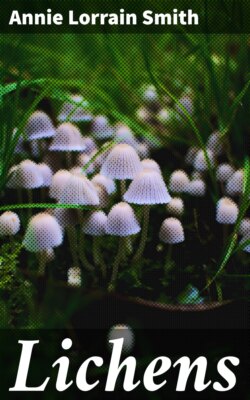Читать книгу Lichens - Annie Lorrain Smith - Страница 50
На сайте Литреса книга снята с продажи.
A. Forms of Cell-Structure
ОглавлениеThere is no true parenchyma or cellular structure in the lichen thallus such as forms the ground tissue of the higher plants. The fungal hyphae are persistently filamentous and either simple or branched. By frequent and regular cell-division—always at right angles to the long axis—and by coherent growth, a pseudoparenchyma may however be built up which functions either as a protective or strengthening tissue (Fig. 36).
Fig. 36. Vertical section of young stage of stratose thallus (Xanthoria parietina Th. Fr.). a, plectenchyma of cortex; b, medullary hyphae; c, gonidial zone. × 500 (after Schwendener).
Lindau[311] proposed the name “plectenchyma” for the tangled weft of hyphae that is the principal tissue system in fungi as well as lichens. The more elaborated pseudoparenchyma he designates as “paraplectenchyma,” while the term “prosoplectenchyma” he reserved for the fibrous or chondroid strands of compact filaments that occur frequently in the thallus of the larger fruticose lichens, and are of service in strengthening the fronds. The term plectenchyma is now generally used for pseudoparenchyma.
